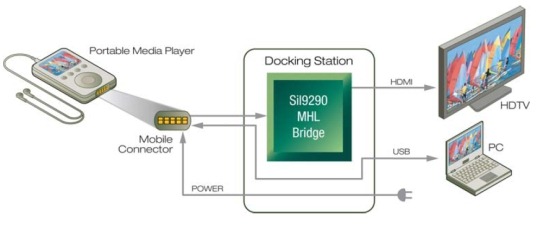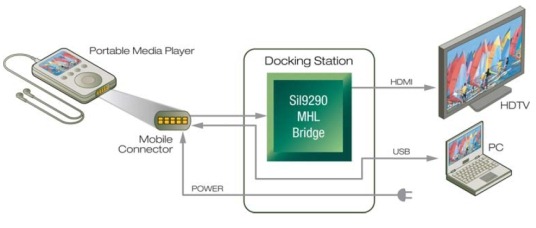New HD video-out plug for phones in the works
3 min. read
Published on
Read our disclosure page to find out how can you help MSPoweruser sustain the editorial team Read more

Nokia Corporation, Samsung Electronics Co., Ltd., Silicon Image, Inc. , Sony Corporation and Toshiba Corporation today announced the formation of the MHLâ„¢ (Mobile High-Definition Link) Consortium to develop a new mobile audio/video interface standard for directly connecting mobile phones and other portable consumer electronics (CE) devices to high-definition televisions (HDTVs) and displays. The MHL standard features a single-cable with a low pin-count (and therefore smaller) interface able to support up to 1080p high-definition (HD) video and digital audio while simultaneously providing power to the mobile device. The MHL Consortium is also announcing the availability of an abridged draft specification available for review at www.mhlconsortium.org.
The MHL Consortium was established by the Mobile High-Definition Interface Working Group announced on September 28, 2009 and is responsible for developing, licensing and promoting the new mobile connectivity technology as an industry standard open to anyone desiring to become an adopter and enabling the development of compliant mobile and display products across a broad connectivity ecosystem. Products implementing MHL technology will feature:
· HD Video and Digital Audio
Consumers will be able to display HD video content with up to 1080p picture quality and digital audio from their mobile device on an HDTV.
· Low Pin-Count Interface
HD video and digital audio is transmitted via a low pin-count interface simultaneously providing data, control and power, which allows mobile devices to maintain their small form factor and keep implementation costs low.
· Provision of Power to the Mobile Device
Digital HD content can be output from the mobile device over a single cable while power is provided to the device. For example, a mobile phone can play back a full-length movie on an HDTV without draining power, so when the playback is completed the mobile phone can continue to be used for other purposes, such as calls and emails.
· Content Protection
High-bandwidth Digital Content Protection (HDCP) technologies protect high-value digital motion pictures, television programs and audio against unauthorized interception and copying.
Silicon Image had previously developed a physical connector on which the standard will be based, and importantly the connector was also compatible with the USB standard, making it useful as a general purpose connector rather than just a new mini-HDMI replacement.
Now that microUSB is just catching on, do we really need another connector? On the other hand, with our devices set to become particularly media-heavy, now may just be the right time. Let us know your thoughts below.
Via Phonescoop.com









User forum
0 messages